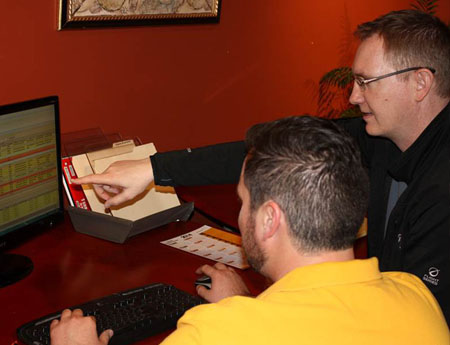Cable Gives New Meaning To ‘All Systems Go’

RELATED: Building the Very Model of Efficiency
This year promises to be an active one for traffic and billing systems in the cable network space, with vendors working to implement new systems at a number of major networks and gain new business through much improved software.
Much of this activity is being prompted by the desire to streamline operations and, consequently, costs, and at the same time boost ad revenue, says Scott Criley, CTO for the media business at Harris Broadcast, which has made a number of upgrades to its systems.
To tap into those imperatives, Harris has been adding several features to its traffic and billing systems, including tools to better monetize cross-platform content delivery, tighten integration with automation systems and generate live logs that allow programmers to better sell unused inventory closer to airtime.
“We are coming up to another election cycle and the ability to take political ads close to airtime is a very powerful revenue upside for networks,” Criley says.
Cash Squeeze
The push to develop systems to pump up the bottom line at cable networks is also inspiring vendors to speed up the pace of innovation. “Our job is to help networks sweat more money out of their network and to open up opportunities for greater revenue,” says James Ackerman, executive chairman at Broadway Systems, which works with Fox News, TV One, BBC America and others.
The smarter way to stay on top of broadcasting and cable industry. Sign up below
Toward that end, the company has reorganized its operations to speed up product development and will be showing the new 7.0 version of its traffic and billing software at the 2014 NAB show in April in Las Vegas. “It is the fulfillment of three years of development work and includes some unbelievably cool things,” he says.
New tools and acquisitions have also produced a shift in the competitive landscape between vendors. Since acquiring VCI Solutions in 2010, WideOrbit has significantly expanded its market share of the cable network business.
“We’re not at the stage where we can announce client wins,” says Eric Mathewson, founder and CEO of WideOrbit. “But in terms of contracts that are already signed, we have gone from working with networks that have roughly 5% [of the cable network ad spend] to the point where we will have about 40% of the money by the end of 2015.”
SintecMedia has also made myriad acquisitions, including Argo Systems, StorerTV and most recently Pilat Media. Geoff Nagel, VP of go to market strategy for North America explains that Sintec Argo systems provided them with a solution for tracking affiliate fee revenue and that
the acquisitions have helped them improve the features of the upcoming release of On Air 4.0.
“We have really focused on efficiency, streamlining the process, revamping the UI [user interface] and allowing operators to personalize their screens,” Nagel says.
That has paid off with a deal to deploy their systems at the Fox entertainment networks, along with their ongoing work with NBCUniversal, where they have deployed their systems at five networks.
AUTOMATING THE AGENCIES
Just as broadcasters and cable networks are looking to streamline their traffic and billing operations, software vendors have been automating workflows at ad agencies. “We’ve been working to automate processes that in the past could have taken several days,” says Michelle Clayton, account director of professional services for Mediaocean, which has some 80,000 users at ad agencies around the world.
As part of that effort, Mediaocean launched its Optica system, which uses Comcast AdDelivery’s fiber infrastructure to deliver ads, in May 2013, then launched its Connect platform this past December.
Connect is designed to be an open platform that streamlines the buying process by allowing the various systems used by different agencies to better communicate with each other, Clayton says. “Every agency is going to use their preferred tech partners but Connect creates a hub” for working with those different companies and systems, she says.
